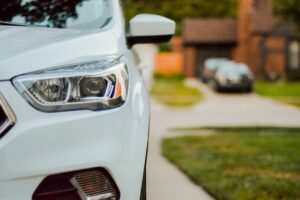Contents
Introduction
If you’re new to the world of car ownership, you might not know that there’s a lot more to auto insurance than just liability. There are several different types of coverage available, and knowing what they are can help you make smart decisions about your protection plan.
Liability Coverage
Liability coverage is the most basic type of auto insurance. It covers injuries or property damage caused by your vehicle to another person(s). The purpose of this coverage is to protect you from the financial consequences associated with an accident, such as medical bills and other expenses.
There are four types of liability coverage:
- Bodily injury liability – Covers injuries sustained by others as a result of your negligence in operating your car.
- Property damage liability – Pays for damages done to another’s cars or property when you’re at fault. This includes both damage that results from an accident and vandalism/theft if you don’t have comprehensive coverage (see below).
- Uninsured motorist bodily injury – Protects against injuries sustained while riding in your own car after another driver involved in the accident fails to purchase auto insurance or has insufficient coverage. This type also covers those who were injured by hit-and-run drivers and pedestrians struck by uninsured motorists’ vehicles while walking on public streets or sidewalks near their homes.* Underinsured motorist bodily injury – Protects against accidental losses where the other driver doesn’t have enough insurance protection because they only purchased what’s called “liability” limits rather than full protection amounts needed for each person injured during any given incident.”
Uninsured and Underinsured Motorist Coverage
Uninsured motorist coverage protects you if you’re in a car accident caused by someone who doesn’t have insurance. If another driver hits you and causes injuries, it’s likely that that person doesn’t have insurance—which means that if you want to be compensated for your medical bills, lost wages, or other damages, you’ll need to seek compensation from the at-fault driver’s insurance company.
Underinsured motorist coverage (often called UM/UIM) helps cover costs when the at-fault driver is underinsured. If they only carry $25,000 in liability coverage but their actions caused more than $100,000 worth of damage to your vehicle and medical bills (not including pain and suffering), UIM will step in and help make up the difference between what their policy covers and what your actual losses are—up to an amount specified by state law.
Medical Payments or Personal Injury Protection (PIP)
Personal injury protection offers coverage for your medical costs when you’re injured in a car accident, regardless of who caused the accident. A typical policy will pay 80% of reasonable and necessary medical expenses up to a maximum amount, which varies by state. Some states require insurance companies to offer this coverage and may even require it as part of your basic coverage.
Medical payments is similar to personal injury protection, but instead of covering your medical bills after an accident, it covers them before one happens. This type of policy pays for emergency room treatment and hospital stays before you file a claim with your own insurer (or if the other driver doesn’t have enough liability coverage). You can also use medical payments for non-emergency care if you need it—for instance, if you break down on the side of the road far from home—and some policies include periodic checkups or x-rays so that your doctor can keep track of potential health problems without having them fall through the cracks because they weren’t covered by PIP or had already been treated with out-of-pocket funds
Collision Coverage
Collision coverage is designed to help pay for damages to your car when you’re at fault. This type of coverage can be purchased as a standalone policy, or it can be included in comprehensive coverage. If you opt for the latter option, you’ll want to make sure that your collision and comprehensive coverage meet or exceed the car’s actual cash value (ACV) so that repairs can be made without worrying about having enough money saved up in case of an accident. Collision insurance may also be offered as part of a package policy or an umbrella policy that includes other types of car insurance like personal injury protection (PIP).
Comprehensive Coverage
Comprehensive coverage protects you from damage to your car that isn’t covered by collision or liability insurance, like when someone drives a shopping cart into your parked car.
Accidents can happen even if you take the best care of your vehicle and drive safely.
So if someone runs a stop sign and crashes into you, comprehensive insurance covers costs for repairs (or replacement) of your car’s body parts such as bumpers, fenders and doors.
The other common example is theft—if someone steals your vehicle while it’s parked in front of your house after dark, comprehensive insurance pays to replace it with an identical model (assuming there are no safety recalls). Don’t worry though; this doesn’t cover damage caused by normal wear and tear over time!
Towing and labor costs
Towing and labor costs are the amount of money that you’ll pay for towing services. Towing services include towing your car from the scene of an accident, or if it breaks down on the road. Labor is when mechanics fix your vehicle and make sure it’s in good working condition again.
You can choose to get this coverage with one or two options:
- Standard tow coverage will cover standard roadside assistance—things like changing flat tires, jump-starts etc… This type of coverage will also help pay for locksmiths if you lock yourself out of your car or house, but not unlockers (they are a special thing).
- Full service tow coverage gives you all kinds of help: they’ll change tires and batteries too! They’ll even pick up groceries when they drop off their cars at home after getting repaired at an auto shop!
Insurance can protect you from a number of problems.
You should be aware of the various types of auto insurance coverage and how they can help protect you in a variety of situations.
- Personal injury protection (PIP): This coverage provides medical expenses for any injuries you suffer in an accident, regardless of who was at fault for the collision. In some states, PIP is referred to as no-fault coverage.
- Collision: This type of coverage covers damage to your vehicle after an accident with another party or object.
- Comprehensive: This type of coverage protects against losses caused by events other than collisions, such as vandalism or theft.
Conclusion
With the right auto insurance coverage, you can stay protected against the many risks that come with driving. We hope this article helped you learn more about the different types of car insurance policies available and why they’re important for protecting yourself from financial losses.



Average Rating